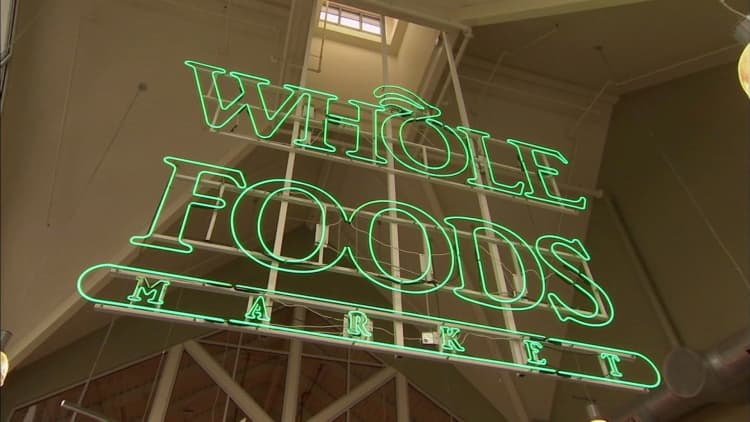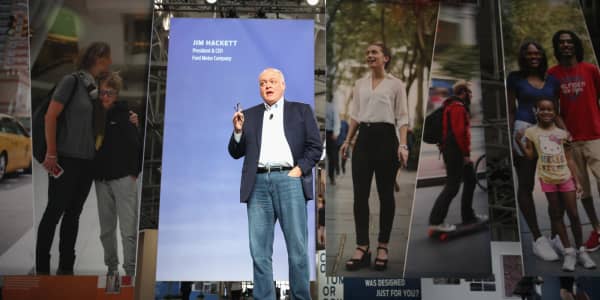Thi Lam and his business partner, Brent Lagerman, made a discovery last summer that has dramatically changed their lives. While working as graphic designers at a branding agency, they started conducting "lunchtime experiments" with the office SodaStream. They started with limes, leftover Splenda and Café Bustelo. They threw whatever they could find into the seltzer-making machine, including lemon zest and ginger, citric acid tablets and maple syrup, until they created something new.
"When you think coffee and citrus, you don't really imagine those two things ever going together in a drink," said Lam.
After only a few months, excited about the results of their carbonated creativity, the pair quit their design jobs. Lagerman survived primarily on income from his spouse; Lam took on freelance jobs and dramatically reduced his expenses.
"I survived without real income through extreme budgeting," Lam said. "I cut out entertainment completely. I would eat only one big meal in the day and try and find free snacks from Brent's co-working space." By the end of the summer, the pair started the company, Keepers, and officially became beverage entrepreneurs.
"We want to be a company that champions odd pairings and put two things that you wouldn't expect to go together together and see what happens," Lam said.
What those odd pairings have led to is nothing short of remarkable. In less than a year, the spare-time experiments resulted in a deal with Whole Foods Market to sell Lam and Lagerman's beverage.
Lam is surprised and humbled by recent events. Less than a year ago they were making 50 bottles at a time by hand, selling roughly 10 cases a month. Now they are churning out thousands of cans in a factory. They sold 350 cases in August and, due to limited resources, had to turn down an invitation to sell their product at the trendy Coachella music festival in California. The founders' first soda was made in a bottle, but on the advice of Whole Foods — that cans are "hotter" among consumers right now — they switched their entire production over to cans.
Lam breaks down the rapid company success story using five factors:
1. There are no shortcuts — hard work, long hours and lots of research are required.
Lam and Lagerman spent many hours learning about coffee, soda and the beverage industry. They spoke to people in the industry and found mentors. They read a variety of books, including The Lean Startup by Eric Ries and Honest Tea by Seth Goldman, co-founder of the popular bottled organic tea company now owned by Coca-Cola.
They watched countless YouTube videos and learned how to use beverage equipment and how to carbonate drinks from "funny Midwestern brewery guys," Lam said.
And the pair did whatever it took to bring their vision to life. Hard work for them meant staying up all night to bottle their drink, pushing heavy carts of product through the streets of Manhattan to deliver to customers, and taking every opportunity to demonstrate their product in stores.
"We drink, think and live Keepers 24/7," Lam said.
2. Build on your existing strengths.
As graphic designers at a branding agency, Lam learned the basics of branding. The agency would ask clients many questions about their brand, target audience and marketing goals, and that information would be used to inform the design. Lam used this same process to bring Keepers to life.
"I think the brand personality separates us." They express this personality through the design of the cans, which they describe as bright, light and fun, and through the messaging, which they strive to keep lighthearted, quirky and honest. Marketing experience from their previous jobs also helped them think about how to position their product to take advantage of market trends. Soda sales have been declining in recent years, and seltzer water sales have been steadily increasing. Keepers set out to intentionally position their product between these two categories.
We are always looking for things that are so unique that they almost create their own new category.Chris Mancalocal program coordinator at Whole Foods
Lam also explained that their product benefits from the evolution of coffee culture in the United States, from an instant product, to a brewed on-the-go utility item, and then coffee that consumers were willing to sit and wait to have made for them. "Now we are in the innovation stage, with things like nitro brew, coffee with oil and coffee soda. So our product launch happened at the perfect time," he said.
3. Build from an existing network if you have one.
To build the business quickly, Lam turned to community connections — he found it to be a powerful network of expertise and experience. A network of fellow churchgoers proved to be a good resource. "Our pastors have fostered a community where people believe in each other's dreams. Members are encouraged to mentor and bless others freely," he said. Lam met a coffee roaster, several business mentors and a few investors at his place of worship.
More from iCONIC:
Start-ups making 'bad' food good again and raising millions
Keepers also joined new communities. The pair was accepted into the membership-based food incubator, Brooklyn Foodworks, which houses a professional kitchen and has countless resources to help food entrepreneurs launch and grow their business.
4. Get your product out there — fast!
Lam didn't wait until the product was "perfect" to test it on the public. Just two months after creating it, he was selling it at a holiday market in Brooklyn. "We sold over 100 bottles and met a woman from Whole Foods. She told us a few things we needed to do, like get nutrition labels, different licenses, verification and all this other stuff we didn't know we had to do, until we met her," he recalled.
5. Maintain a strong, and time-consuming, connection to customers.
Lam works hard to maintain a strong connection to his customers. The team is very active on Facebook and Instagram. They comment on posts, answer questions and thank customers for their support. "It's time-consuming, and some would say that it's dumb to do that, but we freaking love our customers," Lam said. He strongly believes that building a community around your product will help make it a lasting success.
How the big Whole Foods break happened
These factors have served Keepers well. Getting their product out there fast resulted in meeting the Whole Foods representative just a few months after they had a product. Building a community around their product brought them to the attention of Whole Foods once again.
"I had seen their product pop up around town and online. It's really different, so it caught my eye from a distance," said Chris Manca, a local program coordinator at Whole Foods. Manca scours New York City looking for new local products he can help grow within Whole Foods. "We are always looking for things that are so unique that they almost create their own new category. That is what Keepers Coffee Soda struck me as, so I reached out to them to see what they were up to."

Soon after speaking with Manca, Keepers started working to get their product on shelves at the retailer, which is now owned by Amazon. When Whole Foods identifies young brands they believe have a lot of potential, they will partner with them, offering advice and support to help ensure a successful rollout. For Keepers this included guidance on packaging, flavor, distribution and launch strategy. In June, Keepers Coffee Soda launched in Whole Foods Brooklyn stores. "We like to start slow with smaller brands. It gives them a chance to focus. Then we look at sales in the stores and will start to add more stores based on success," Manca said.
Whole Foods customers' response to the product led the retailer to add it to shelves at an additional four New York State stores this month. Manca says expansion into more stores is "definitely" a possibility.
Keepers Coffee Soda can also be found in more than 20 cafés across Brooklyn and Manhattan. The company declined to provide a current revenue figure, but Lam and Lagerman have plans to raise $500,000 as they expand to more retail outlets. They want to use the money to launch more flavors, expand their sampling efforts, conduct an online marketing campaign and fund strategic partnerships.
— By Rene Brinkley, CNBC.com




